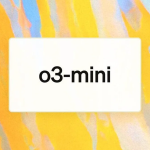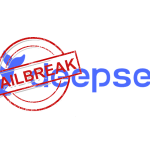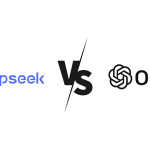- Adobe Content Authenticity: A Revolutionary Tool for Artists in the AI Era
- What Is Adobe Content Authenticity?
- How It Works: A Seamless Process for Artists
- Empowering Digital Creators with Transparency
- Addressing Past Controversies: A Step Forward for Adobe
- The Future of Digital Art in a World Dominated by AI
- Why Digital Creators Should Embrace Adobe Content Authenticity
- Looking Ahead: Building a Unified Ecosystem
- Conclusion: A New Era of Digital Transparency
Adobe Content Authenticity: A Revolutionary Tool for Artists in the AI Era
As generative AI becomes more widespread, concerns over the use of digital art in training AI models have grown. Many artists fear their creative works may be used without permission, eroding trust in online platforms. To address these concerns, Adobe has introduced a new app, Adobe Content Authenticity, which aims to protect artists and their work from unauthorized use, including AI training. This tool is a significant step forward in ensuring transparency, offering creators the ability to secure their content and opt out of AI training programs. Here’s what you need to know about this game-changing app and how it can empower digital creators.
What Is Adobe Content Authenticity?
Adobe Content Authenticity is a new app designed to help digital artists, photographers, and content creators safeguard their creations. The app builds on Adobe’s existing Content Credentials system, a platform the company launched several years ago, often described as a “nutrition label” for digital content. By using this system, creators can add detailed metadata to their images, videos, or audio clips, making it clear who the original creator is and how the content was produced.
For example, when an artist uses Adobe Content Authenticity to secure their work, a small bubble appears on their content, indicating that Content Credentials have been added. This bubble is more than just a watermark—it allows viewers to click and access the metadata, offering transparency about the creation process.
How It Works: A Seamless Process for Artists
The Adobe Content Authenticity app makes it easy for creators to attach metadata to their work. Here’s a quick overview of how this process works:
- Metadata Addition: Users can add their name, social media links, and other details to their work, creating a digital signature.
- Mass Opt-Out from AI Training: One of the most valuable features is the ability to opt out of having one’s content used in training generative AI models. This allows artists to maintain control over how their creations are utilized.
- Cross-Platform Support: While the app integrates seamlessly with Adobe’s popular tools like Firefly and Photoshop, it also allows users to attach Content Credentials to content created outside Adobe’s ecosystem. This broader applicability makes it a valuable tool for artists using different platforms.
Empowering Digital Creators with Transparency
In an era where digital art is easily shared and replicated, Adobe’s app addresses a critical need for transparency and control. “By offering creators a simple, free, and easy way to attach Content Credentials to what they create, we are helping them preserve the integrity of their work while enabling a new era of transparency and trust online,” said Scott Belsky, Adobe’s Chief Strategy Officer. This statement underscores Adobe’s commitment to supporting the artistic community and addressing their concerns about AI.
However, it is worth noting that the “do not train AI” feature is currently limited to developers who voluntarily sign up for Adobe’s program. So far, over 3,700 developers have committed to this initiative, signaling a positive shift towards digital transparency in the industry. Yet, some may wonder if broader industry-wide adoption is possible, especially among companies not currently aligned with Adobe’s policies.
Addressing Past Controversies: A Step Forward for Adobe
Adobe’s launch of Content Authenticity comes after facing criticism earlier this year for updating its terms and conditions to allow automatic and manual access to users’ content. This move sparked concerns among users about privacy and the potential for their creations to be used without consent. Adobe’s new tool seems like a direct response to these criticisms, aiming to rebuild trust with its user base by giving them more control over their creative works.
The introduction of a free beta version of Adobe Content Authenticity is a welcome change. Set for release early next year, this beta version requires users to have an Adobe account, but it doesn’t necessitate a subscription. This accessibility could encourage a broader user base to try the app, making it easier for artists to protect their work without additional financial barriers.
The Future of Digital Art in a World Dominated by AI
The launch of Adobe Content Authenticity raises important questions about the future of digital art in a world where AI plays an increasingly prominent role. As AI models become more sophisticated, they often rely on vast datasets, which can include digital art, images, and media found online. By introducing tools like Content Authenticity, Adobe is helping to create an environment where artists can have more control over how their creations are used, potentially influencing how AI models are trained and developed.
Moreover, this new tool could set a precedent for other technology companies to follow, leading to more widespread adoption of digital transparency practices. As more creators adopt similar tools, the broader industry might shift towards a model where respecting the integrity of digital art becomes standard practice.
Why Digital Creators Should Embrace Adobe Content Authenticity
For digital artists, the new Adobe Content Authenticity app offers a host of benefits. It allows creators to:
- Protect Intellectual Property: By attaching metadata and opting out of AI training, artists can ensure their work isn’t used without permission.
- Enhance Trust with Audiences: The transparency provided by Content Credentials can help artists build trust with their audiences, showing how their work was created.
- Benefit from Free Access: Since Adobe offers the beta version without requiring a subscription, it provides an accessible way for artists to start protecting their digital creations immediately.
This app is not just about preventing unauthorized use—it’s about giving artists the tools they need to thrive in the digital age. For those worried about AI’s impact on the creative industry, Adobe Content Authenticity represents a step towards a fairer and more transparent digital ecosystem.
Looking Ahead: Building a Unified Ecosystem
For Adobe Content Authenticity to reach its full potential, it must be part of a larger, unified ecosystem where transparency and trust are industry-wide priorities. Adobe’s collaboration with developers and its free access to the beta version are promising steps, but a broader push—including partnerships with government entities, tech firms, and content-sharing platforms—will be crucial in shaping a future where artists can confidently share their creations.
This is more than a tool—it’s a movement towards protecting digital creators in an AI-driven era. Artists, developers, and platforms must work together to build a transparent and equitable creative environment. By addressing these challenges and capitalizing on opportunities, Adobe Content Authenticity could become the gold standard for protecting creative integrity online.
Conclusion: A New Era of Digital Transparency
Adobe’s launch of the Content Authenticity app marks a significant step towards greater transparency and protection for digital creators. As the AI landscape continues to evolve, tools like this will be crucial for maintaining the integrity of digital art. Artists and content creators should consider embracing Adobe’s new app as a means to protect their work and take control of how their creations are used in the digital realm.
Whether you’re an artist seeking to protect your intellectual property or a developer interested in fostering digital transparency, Adobe Content Authenticity could be the tool you’ve been waiting for. Stay tuned for the beta release early next year and explore how this revolutionary app can empower your creative journey.
Share this article if you believe in supporting digital artists, and let us know your thoughts on how tools like Adobe Content Authenticity can shape the future of online art.






